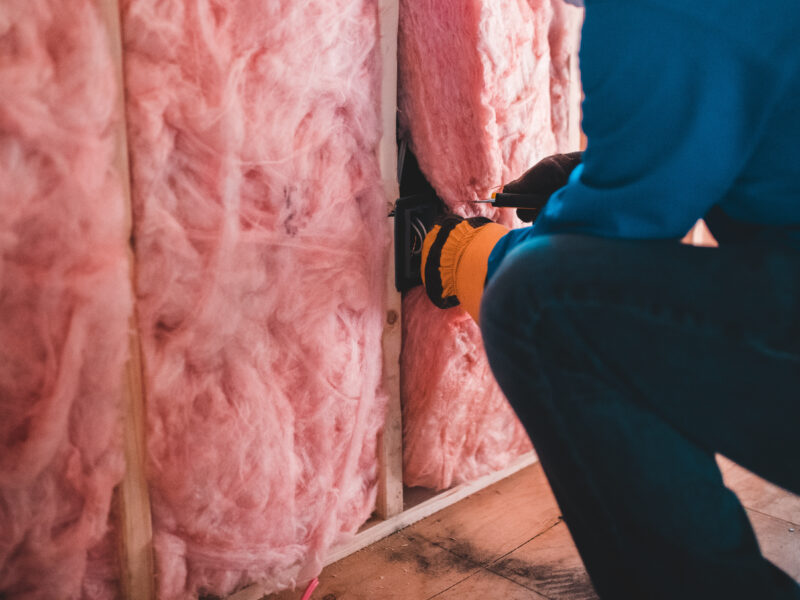

While looking for a good definition of a deep energy retrofit (DER) I started to feel a little like Alice in Wonderland, thinking, “It would be so nice if something made sense for a change.”
Simply put, there isn’t a single definition for DER projects, as different agencies and utilities have varied energy savings targets and metrics to determine success of their pilot programs. The Department of Energy describes a DER as a way to create “larger energy savings and improved economics through a holistic, integrated approach that leverages special opportunities in a building’s life cycle.” A deep energy retrofit provides for energy conservation with the goal of bettering the existing building’s performance.
In terms of home energy savings, most of these agency programs address improvements to a home’s shell, which entails insulation upgrades to the building’s envelope involving the walls, floors, attic and roof. Air sealing gaps around window frames, between plywood sheathing and other hard-to-access areas also prevent air leakage associated with heat loss or gain as well. Heating, ventilation, air conditioning and hot water system upgrades involving direct vent or electric units are sized to reflect the improved energy usage of the retrofitted building. This work also involves replacement or modifications to ductwork, wastewater heat recovery and water piping for heat distribution.
Older homes often need to be retrofitted both with air and moisture barriers and new flashing material. Without a water barrier, the newly insulated cavities can actually create a situation where the moisture won’t dry out and mold growth becomes a mathematical certainty.
With DERs, the entire building has to be regarded as a system. To make sure everything is running correctly after completion of the retrofit, the house is monitored to comply with the energy standard of its locale and the agency overseeing the project. The occupants control the operation of the building by addressing the relative humidity, temperature, ventilation, lighting and maintenance, which comes at a cost and requires expertise and attention on a regular basis. The building itself consists of different assemblies including walls, roof, foundation, systems to power the physical plant — including heating, cooling, air handlers, ducts, controls and plumbing — and finished items like appliances, furnishings and fixtures. While these elements afford energy savings it is, in fact, the embodied energy (comprising the total energy needed to reap raw materials, manufacture, and transport them) already existing in the altered house that offers the greatest benefit.
Designing and renovating a deep energy retrofit often takes a village of professionals — architects, engineers, HERS raters and construction subcontractors along with a general contractor to oversee all the trades involved in the alteration. This may appear problematic to some, but the good news is that more individuals in the building industry are becoming engaged in this type of construction project than just a few years ago.
The preservation of the house — an act of sustainability — also confers a benefit going beyond energy efficiency. Since the project requires more labor and fewer materials, the actual retrofit work remains in the local economy. If the house is old enough and contains mortise and tenon windows, whose dense wood came from old-growth forests, they can be easily repaired. It has been documented that these windows with a storm panel and weather striping are just as energy efficient as insulated glass units, which only come with a 10-to-20-year warranty at best.
At this time, the building sector in the United States guzzles 39 percent of its total energy consumption while 20 percent of this is expended on residential buildings (U.S. Energy Information Administration, 2018).
The DOE established its Building Energy Codes Program in 1992 and older homes predating the codes constitute 68 percent of the residential buildings in the United States. These buildings often have considerable air leakage to go with substandard insulation. With no air sealing, a significant part of their utility bills can be attributed to cooling and heating losses. Additionally, 43 percent of these houses have little to no insulation whatsoever. According to National Renewable Energy Lab in 2019, an estimated 34.5 million wood stud homes in this country have no insulation whatsoever. This is a stunning statistic with regard to detached, single-family homes in this country. Additionally, 71 percent of existing houses have 10 or more air changes per hour, and that denotes substantial air leakage in building envelopes. Research on best practices for the energy performance of wall assemblies is ongoing but without developing high-performance enclosures, savings in residential energy consumption on a large scale will be difficult to achieve.
It’s interesting to note that most individuals planning these retrofits are primarily concerned with achieving 50 percent or more in energy savings as their raison d’etre. The benefits of deep energy retrofits in addition to energy savings also include resilience, greater thermal comfort, excellent indoor air quality and added value with mortgage lending appraisals. The notion of actually thwarting climate change before it’s too late certainly is of concern, but it doesn’t appear to be high on the radar screen in terms of discussions regarding DERs. As Alice would say, it just gets curiouser and curiouser.
Anne Surchin, an East End architect, is vice chair of the Southold Landmarks Preservation and co-author with Gary Lawrance of “Houses of the Hamptons 1880-1930.”
 More Posts from Anne Surchin
More Posts from Anne Surchin